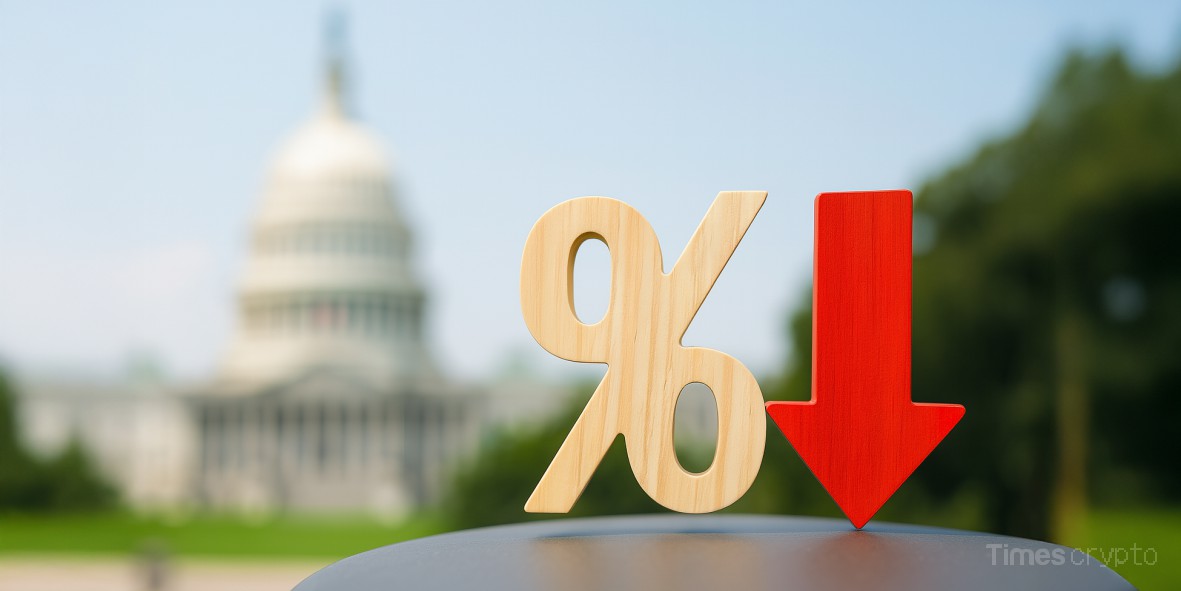Key Takeaways
- Due to increasing labor market risks and a slowdown in job growth, Jerome Powell indicated the possibility of a September rate cut.
- Bitcoin (BTC) briefly touched $116,000, while Ethereum (ETH) surged around 7% during the weekend, on renewed risk appetite.
- The Dow Jones jumped 900 points, with small-cap stocks leading gains as investors turned to rate-sensitive assets.
- Markets now price an 80% probability of a September rate cut, up from 70% pre-speech.
Table of Contents
The Powell Put: How One Speech Reignited Risk Appetite
Federal Reserve Chair Jerome Powell did not just open the door to a rate cut; he kicked the door off its hinges. In his eagerly awaited Jackson Hole speech, Powell said there were “downside risks to the labor market” and “a pronounced slowing” in labor markets, which justified potential easing policy. The message: The Fed, after holding rates steady at 4.25%-4.5% for months, is ready to take action.
"In the near term, risks to inflation are tilted to the upside and risks to employment to the downside. A challenging situation. When our goals are in tension like this, our framework calls for us to balance both sides of our dual mandate. Our policy rate is now 100 basis points closer to neutral than it was a year ago, and the stability of the unemployment rate and other labor market measures allows us to proceed carefully as we consider changes to our policy stance. Nonetheless, with policy and restrictive territory, the baseline outlook and the shifting balance of risks may warrant adjusting our policy stance." - Jerome Powell at the Jackson Hole Economic Sympossium.Markets responded instantly. After Powell’s speech, the Dow industrials rallied 2%, the small-cap Russell 2000 rallied 3.8%, and crypto, seen as a way to leverage liquidity, went parabolic. Bitcoin (BTC) quickly reached $116,000, while Ethereum (ETH) surged 7% higher, marking a clear rush into speculative assets.
Why Crypto Loves Cheap Money
A rate cut typically favors risk assets by making borrowing cheaper and increasing liquidity. For crypto, it is even more pronounced because:
- Lower yields make zero-yield assets like Bitcoin relatively more attractive.
- Cheaper credit facilitates more leverage and trading.
- Dollar weakness (the index declined 1%) benefits dollar-denominated cryptocurrencies.
On the other hand, some analysts are once again pointing to “stagflation” risks, with growth slowing while inflation remains high, which limits the Fed’s scope and flexibility.
Political Pressure and the Fed’s Independence
Powell’s dovish turn comes amidst heavy pressure from the White House. Just days before Powell’s speech, President Trump publicly threatened to fire Fed Governor Lisa Cook. This raised fresh questions about independence at the central bank. While Powell stated that decisions will be driven by data, the political backdrop brings some uncertainty to the timing and level of the future rate path.
Final thought: Powell’s policy turn signals the end of the tight money, which is highly beneficial for crypto. However, it’s important to remember that a rate cut won’t be effective if corporate earnings decline.
FAQs
How could a rate cut affect Bitcoin (BTC)?
Lower interest rates minimize opportunity costs for holding non-yielding assets and often weaken the dollar, boosting BTC’s attractiveness.
Will the Fed definitely cut in September?
Markets price an 80% chance, but it will depend on upcoming inflation and jobs data.
Why did small-cap stocks rally?
Speculative assets benefit most when borrowing costs drop and risk appetite increases.
For more crypto-related stories, read: Cryptocurrency Weekly Price Prediction: ETH Hits ATH, But BTC & XRP Stumble as Jackson Hole Hammers the Dollar







